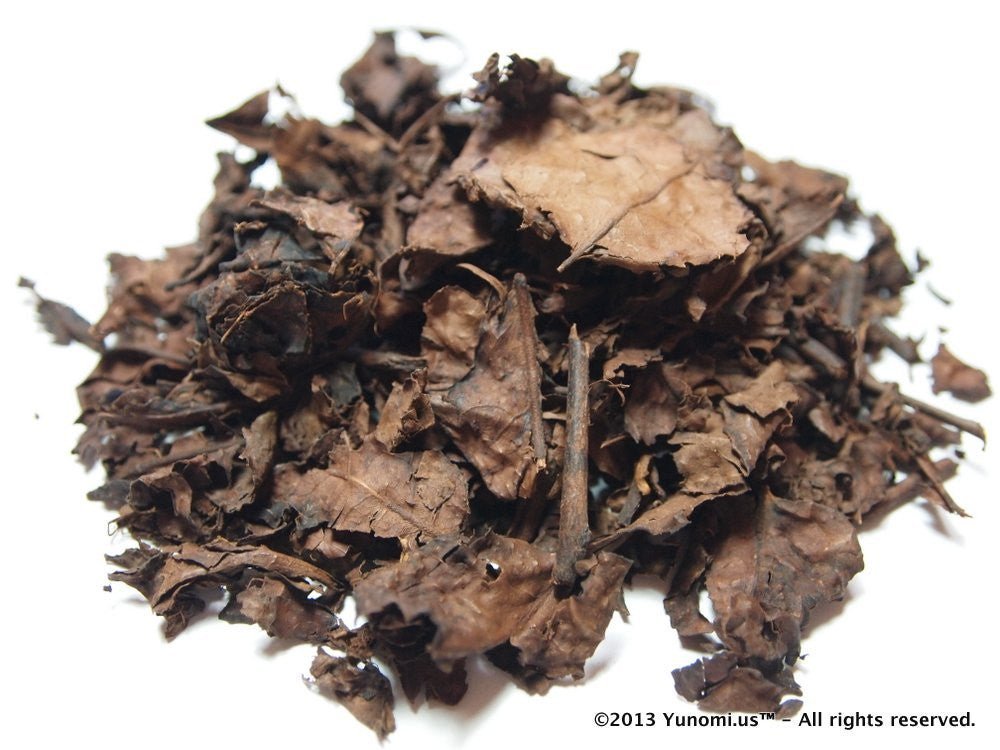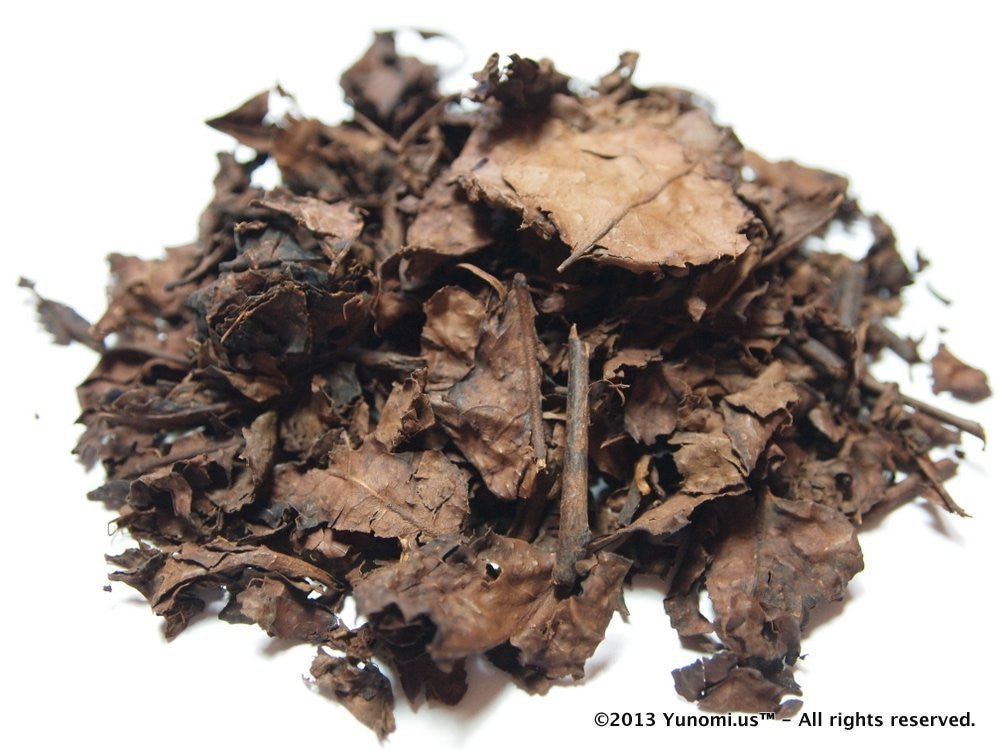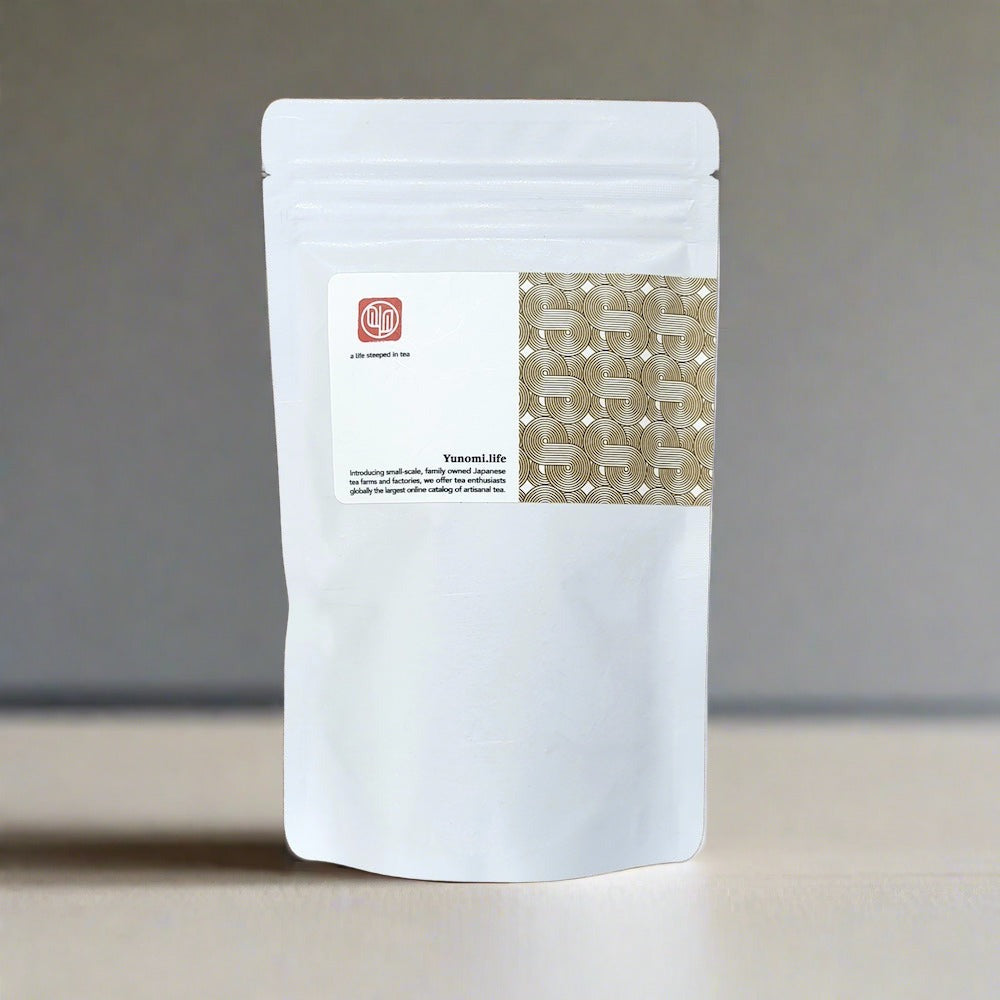#0303.N4 風流:バタバタ茶、希少番茶 ふりゅう バタバタ茶
#0303.N4 風流:バタバタ茶、希少番茶 ふりゅう バタバタ茶 - 100g / 3.5オンス / バルクバッグ 【在庫切れ】取り寄せ中につき、入荷次第発送します。大きいサイズを小さい袋に小分けするには1-2週間、取り寄せは2-3週間がかかりますが、商品によって異なります。現在、各メーカーの抹茶生産は非常に時間がかかり、1-3ヶ月間がかかる場合もあります。
受け取りを利用可能か読み込めませんでした
商品が在庫切れの場合は、ウィッシュリストに追加して、商品が購入可能になったときにメールで通知を受け取れるようにしてください。
配送と送料について
配送と送料について
送料は国、配送業者、配送方法によって異なります。商品を在庫に追加し、カートページに移動して送料見積もりツールをご確認ください。一部の国では、ご購入後に手動で送料を計算する場合があります。
YUNOMI.LIFEの配達保証:追跡番号付きの航空便で発送されるすべての注文の配達を保証します。 (条件が適用されます。通知された例外。)まれに、輸入のために追加の通関手続きが必要になる場合があります。私たちは最大限に支援いたします。お客様の過失によらず、発送から1ヶ月以内に注文が届かない場合は、追加料金なしで注文を交換または返金いたします。お客様の住所への配達が困難であると判断した場合、当社は出荷を拒否する権利を留保します。この保証は、受取人が通関手数料および輸入税の支払いを怠ったり拒否したりした場合、郵便局または配送センターで保留中の注文の受け取りを怠った場合、または間違った住所のために注文が配達できない場合には適用されません。Yunomi.lifeの配達保証は卸売購入には適用されません。
バタバタ茶は、15世紀以前から続く独特の伝統を持つお茶です。富山県旭町蛭田町の人々に愛され、中国のプーアル茶に似た発酵茶で、伝統的にはひとつまみの塩を加えて泡立てて飲みます。
バタバタチャの歴史
このお茶に関する最古の記録は、1472年に浄土真宗第8代座主蓮如上人が来訪した際に、地元の人々がこのお茶を米やお酒と混ぜて一品料理として飲食していたことを記したものです。しかし、1970年代までにこのお茶の生産は衰退し、朝日村蛭田の人々は福井県美浜村の茶農家、清水秀雄氏から濃茶を購入していました。
1975年、高齢となった清水さんの生産停止に伴い、富山県小杉村の萩原明伸さんが製法を学び、ビルダン村の人々に受け継がれました。1980年代には、伝統を守り伝えるため、ビルダン村全体が一丸となって萩原さんから製法を学び、1990年代には村内に畑を整備しました。香川大学の宮川金次郎教授の協力を得て、品質向上に努め、現在では地元商工会議所が主導する地域プロジェクトとして、生産が進められています。
バタバタチャはどのように作られるのですか?
7月から8月にかけての三番茶は、バタバタ茶を作るための茶葉の収穫期です。茶葉は枝ごと摘み取られ、細かく刻まれてから蒸し、黄褐色になるまで蒸されます。蒸し工程によって酵素の働きが止まります。(この工程によって緑茶として分類されます。この工程がないと、酵素が葉を酸化させてウーロン茶や紅茶に変えてしまいますが、ウーロン茶や紅茶を作るには他にも考慮すべき工程があります。)
半日乾燥させた後、木箱に入れて発酵させます(この工程により、濃茶に分類されます)。茶葉の温度が約65~70℃に達すると、茶室に並べ、2~3日ごとに裏返し、3~4週間乾燥させます。その後、屋外に取り出し、半日陰で乾燥させた後、さらに2~3日間天日で乾燥させます。
富山県のこの地域では、先祖を偲ぶ会や結婚式後の花嫁紹介など、様々な行事でバタバタ茶が振る舞われます。家族や親しい親戚、友人同士で開かれる「茶会」のような場であり、儀式的でありながら気取らない雰囲気も持ち合わせています。淹れたお茶を茶碗に注ぎ、泡立てて泡立てます。町の人々は、普段の食事にも、泡立てずにバタバタ茶を飲むことがあります。
ビタミンB12
私たち自身はバタバタチャのビタミンB12含有量を検査していませんが、この研究では、このお茶には相当量のビタミンB12が含まれているとされています。「乾燥茶葉100gあたり456 ± 39 ng、茶飲料100mLあたり2.0 ± 0.3 ng」。この研究ではラットを用いた試験が行われ、「発酵紅茶に含まれるビタミンB12は哺乳類において生物学的に利用可能である」という結論が出ています。
出典:橘高(桂)裕美、江原修平、渡辺文雄、中野喜久。「細菌発酵させた日本産紅茶(バタバタ茶)由来のコリノイド化合物の特性評価」農業食品化学ジャーナル、2004年、52巻(4号)、909~911頁。(抄録は会員登録なしでも閲覧可能です。)
この研究のPDFレポートは、こちらからご覧いただけます:橘高桂裕美、渡辺文雄、中野喜久。「緑茶、青茶、赤茶、紅茶の葉におけるビタミンB12の含有量」『 Journal of Nutritional Science and Vitaminology 』2004年、50号、438-40頁。
上記を理解するために、栄養士、食品科学者などからのコメントをいただければ幸いです。
製品情報
- 原材料:発酵後緑茶葉
- 収穫時期:7月~8月
- 地域:富山県朝日村
バタバタチャの淹れ方
伝統的には、約20gのバタバタ茶の葉を大きな鍋で1時間煮ます。その後、ひとつまみの塩を加え、 専用の泡立て器で最大5分間泡立てます。
あるいは、より軽く標準的なお茶として、5 グラムを使用して 200 ~ 400 ml のお湯に約 5 分間浸すことをお勧めします。
ベンダー情報
- 店名:風流番茶専門店
- 種類:喫茶店
- 店主:番茶専門家 池松信彦
- 設立:2010年
- 所在地: 〒830-0047 福岡県久留米市津布本町1863-3 ( Google Map )
番茶専門店風龍について
番茶専門店風龍は、福岡県久留米市の茶農家と直接協力し、美味しい番茶の開発に尽力する茶匠、池松信彦氏によって2010年に設立されました。池松氏は、全国各地の希少な番茶を集めるスペシャリストでもあります。
-
産地富山 - 富山県
支払いのセキュリティー対策
支払い方法
お支払い情報は安全に処理されます。当社はクレジットカード情報を保存したり、お客様のクレジットカード情報にアクセスしたりすることはありません。





